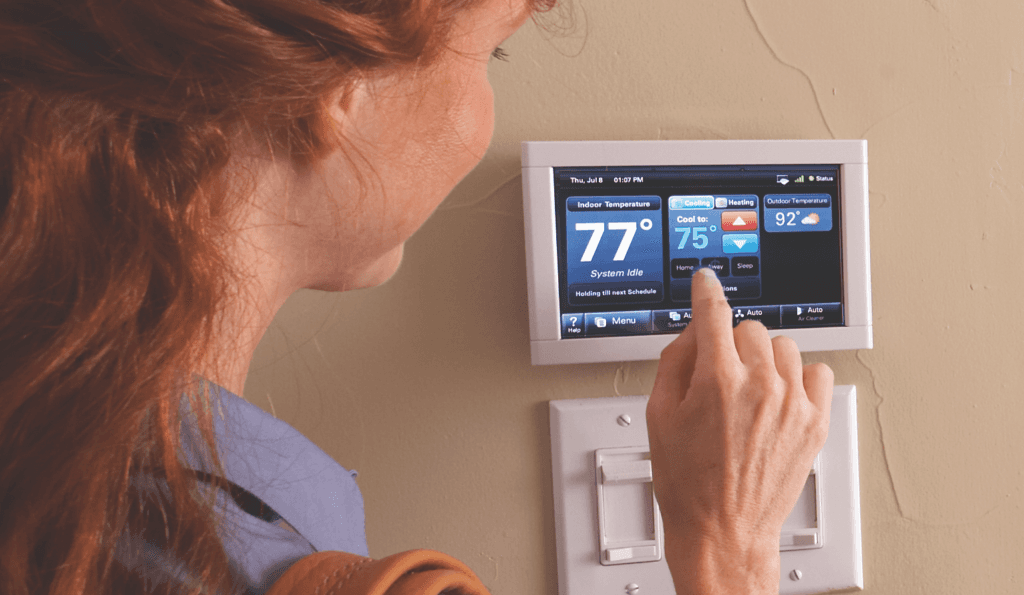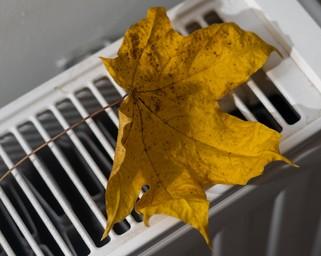Busting Common Thermostat HVAC Myths
Uncover the truth about common thermostat myths, debunking misconceptions and providing valuable insights for optimal comfort and energy efficiency.
Thermostats are an important part of your heating, ventilation, and air conditioning (HVAC) systems and a key measure of your home's temperature. However, there are many misconceptions and myths surrounding thermostats and HVAC systems that can fool even the wisest homeowners. In this blog, we will debunk common HVAC myths and thermostat misconceptions and provide you with the knowledge to make informed decisions about your heating and cooling system to maximize comfort year-round.
Let’s take a moment to debunk a few common thermostat myths that may lead you astray in your quest to optimize efficiency. Understand the relationship between your thermostat and HVAC system and explore the top ten HVAC myths debunked below.
Understanding the Importance of Thermostats
Before we start debunking common thermostat myths, it's important to understand the role of a thermostat in your HVAC system. A thermostat acts as the control center, allowing you to set the desired temperature for your home. When the temperature in your home deviates from your setpoint, the thermostat sends a signal to your HVAC system to either heat or cool the space until it reaches the desired temperature.
10 Thermostat Myths Busted
These 10 HVAC myths and thermostat myths have persisted over time, sometimes even passed down from generation to generations. Take a closer look and see which ones you have fallen for as we debunk common thermostat myths!
Myth 1: Setting the Thermostat Lower (or Higher) Will Heat (or Cool) Your Home Faster
Debunked: One of the most prevalent thermostat myths is the belief that cranking up the thermostat to extreme temperatures will expedite the heating or cooling process. For example, if your house is currently at 60 degrees Fahrenheit, and you want to warm it up to a cozy 70 degrees, you might be tempted to set the thermostat to 75 or even 80, thinking that this will heat your home faster. Unfortunately, this is far from the truth.
When you set your thermostat to a specific temperature, such as 70 degrees, your HVAC system will operate at the same rate to reach that temperature, regardless of whether you initially set it higher or lower. Setting it higher won't make your home heat up any faster; it will only cause your system to overshoot the desired temperature, resulting in unnecessary energy consumption. The same principle applies to cooling your home. Lowering the thermostat below your desired temperature won't expedite the cooling process.
In reality, your HVAC system operates at a consistent rate, and adjusting the thermostat only dictates when it turns on or off, not the speed at which it reaches the desired temperature.
Myth 2: It Takes More Energy to Adjust from a Setback Temperature
Debunked: Another common misconception revolves around setback temperatures. Many people wonder if it's more energy-efficient to maintain a constant indoor temperature rather than setting a setback temperature when they are away and then returning to a comfortable level later. While it's true that your HVAC system works harder to adjust to a new temperature when you return home, this additional effort is more than offset by the energy savings gained when the system maintains the setback temperature while you are away. When you set your thermostat to a setback temperature during periods of inactivity or when you're not at home, your HVAC system has to work less to maintain that lower temperature. This results in significant energy savings over time.
The brief period of increased energy consumption when your HVAC system readjusts to your comfort temperature is far outweighed by the energy saved during the setback period.
Myth 3: Your HVAC System Only Needs Maintenance When It Breaks Down
Debunked: Waiting for your HVAC system to break down before seeking maintenance is a costly and misguided approach. Regular maintenance is essential to keep your system running efficiently and to extend its lifespan.
HVAC systems, like any complex machinery, require periodic inspections and tune-ups to ensure they operate at peak performance. Neglecting maintenance can result in reduced efficiency, higher energy bills, and a higher likelihood of unexpected breakdowns. Maintenance tasks typically include cleaning or replacing air filters, checking for refrigerant leaks, lubricating moving parts, and ensuring all components are in good working condition.
By scheduling routine HVAC maintenance, you can identify and address issues before they escalate, saving you money in the long run and ensuring your system operates efficiently throughout its lifespan.
Myth 4: Fans Cool or Heat a Room
Debunked: While fans can create a breeze that makes you feel cooler, they do not actually cool or heat a room. Fans are designed to circulate air, which can help distribute conditioned air more evenly throughout your living space and make you feel more comfortable. In the summer, a ceiling fan, for example, can create a cooling effect by evaporating moisture from your skin, making you feel cooler. In the winter, reversing the fan's direction can help distribute warm air that rises to the ceiling, improving overall comfort and energy efficiency. However, fans do not alter the temperature of the air in the room.
Myth 5: It's Always Better to Buy the Largest HVAC System Available
Debunked: When it comes to HVAC systems, bigger is not always better. Some homeowners believe that purchasing the largest HVAC system available will ensure better performance and faster heating or cooling. However, oversized HVAC systems can lead to a host of problems.
An oversized HVAC system may cycle on and off more frequently, leading to inefficient operation and increased wear and tear on the equipment. It may also struggle to maintain consistent temperatures and humidity levels, resulting in discomfort and reduced indoor air quality. Additionally, larger systems come with higher upfront costs and increased energy consumption, which can lead to higher utility bills.
The key to selecting the right-sized HVAC system for your home is to have a professional load calculation performed by an HVAC professional. This calculation considers factors such as the size of your home, insulation levels, and local climate to determine the optimal size for your HVAC system. A properly sized system will provide better comfort, energy efficiency, and longevity.
Myth 6: Your Thermostat's Location Doesn't Matter
Debunked: The placement of your thermostat can significantly impact its accuracy and the overall performance of your HVAC system. Thermostats are designed to measure the temperature of the surrounding area, so their location should be carefully considered.
Placing a thermostat in a poorly chosen location can lead to inaccurate temperature readings and inefficient operation. For example, if your thermostat is installed near a window, door, or heat source like a stove or oven, it may register higher or lower temperatures than the rest of your home, causing your HVAC system to turn on or off prematurely.
To ensure accurate temperature control, place your thermostat in a central location away from direct sunlight, drafts, and sources of heat or cold. This will help your thermostat make more informed decisions about when to activate your HVAC system, resulting in better comfort and energy efficiency.
Myth 7: Turning Off Your HVAC System When You're Not Home Saves Energy
Debunked: Some homeowners believe that turning off their HVAC system completely when they're not at home is the most energy-efficient approach. While it's true that shutting down your HVAC system will save energy, it can lead to other issues.
When you turn off your HVAC system entirely, your home's temperature can become too extreme, especially in extreme weather conditions. This can result in your HVAC system working overtime to bring your home back to a comfortable temperature when you return, potentially using more energy than if it had maintained a moderate setback temperature.
A better approach is to use setback temperatures while away from home. Setting your thermostat to a slightly higher temperature in the summer or a lower temperature in the winter can help reduce energy consumption without shutting down your HVAC system completely. Additionally, consider investing in a programmable or smart thermostat that can automatically adjust the temperature based on your schedule, ensuring that your home is comfortable when you're there and energy-efficient when you're not.
Myth 8: All Thermostats Are Created Equal
Debunked: Not all thermostats are the same, and the type of thermostat you choose can have a significant impact on your HVAC system's performance and overall comfort. There are several types of thermostats available, each with its own set of features and capabilities.
- Manual Thermostats: These basic thermostats require manual adjustments and offer limited functionality. They are often found in older homes and are less energy-efficient than programmable or smart thermostats.
- Programmable Thermostats: Programmable thermostats allow you to set schedules for heating and cooling, allowing your HVAC system to operate more efficiently based on your daily routine. You can program different temperature settings for different times of the day and days of the week.
- Smart Thermostats: Smart thermostats take programmability to the next level. They can learn your preferences, adjust the temperature based on occupancy, and be controlled remotely through smartphone apps. Some models even integrate with home automation systems and voice assistants.
- Zoned Thermostats: Zoned HVAC systems use multiple thermostats to control different areas or zones within your home independently. This allows for precise temperature control in each zone and can lead to significant energy savings.
When selecting a thermostat, consider your lifestyle, budget, and desired level of control. Investing in a programmable or smart thermostat can provide you with greater convenience and energy savings over time.
Myth 9: Your Thermostat's Displayed Temperature Is Always Accurate
Debunked: While thermostats are designed to provide accurate temperature readings, factors such as thermostat location, calibration, and the presence of drafts or heat sources can affect the displayed temperature.
To check your thermostat's accuracy, you can use a separate thermometer placed near the thermostat and compare the readings. If there is a significant discrepancy, you may need to recalibrate or replace the thermostat to ensure accurate temperature control.
Myth 10: Your Thermostat's Batteries Don't Need Regular Replacement
Debunked: Many thermostats rely on batteries to power their display and internal components. Over time, these batteries can degrade, leading to issues with your thermostat's operation. To prevent unexpected thermostat failures, it's essential to replace the batteries regularly.
Most thermostats have a low battery indicator that will alert you when it's time to replace the batteries. Ignoring these warnings can result in your thermostat losing power, potentially causing discomfort or HVAC system malfunctions. A good practice is to replace the batteries in your thermostat annually or as the manufacturer recommends.
Contact a Trane Professional
Thermostat and HVAC myths can lead to inefficiencies, discomfort, and unnecessary expenses. By debunking thermostat myths and gaining a deeper understanding of how your HVAC system interacts with your thermostat, you can make informed decisions to optimize efficiency, save energy, and stay comfortable year-round.
Contact your local Trane Comfort Specialist to learn more about saving money and energy with your thermostat.




